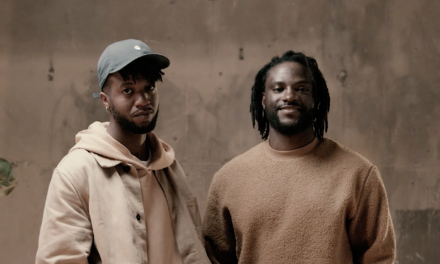The history of Black people braiding their hair is deeply rooted in African culture and has been a significant part of their identity for centuries. Hair braiding holds both cultural and historical significance, representing various social, ethnic, and personal meanings.
Braiding in African societies predates written history, and it has been an integral part of African traditions and customs. Different types of braiding techniques, styles, and patterns have been developed over time, each with its cultural significance. Braids were not only a form of self-expression but also served as a way to communicate social status, age, marital status, and even tribal affiliation.
In many African societies, hair braiding was a communal practice, with family members and community members participating in the process. This practice fostered social bonds and served as a way to pass down cultural traditions from one generation to another.During the transatlantic slave trade, millions of Africans were forcibly taken from their homelands and brought to the Americas. Despite the oppressive conditions, Black people managed to preserve their cultural practices, including hair braiding. Braiding techniques and styles were adapted and evolved, influenced by the diverse African cultures and the mixing of different ethnic groups within the African diaspora.
In the United States, during the era of slavery, enslaved Black people often faced restrictions on their appearance and grooming. However, hair braiding persisted as a form of cultural resistance and preservation. Enslaved women would braid each other’s hair, incorporating intricate patterns and designs, which not only celebrated their heritage but also served as a way to communicate messages and escape routes for those seeking freedom.
In the post-slavery era, hair braiding continued to play a vital role in Black communities. Braiding became a way for Black individuals to reclaim their identity, express their cultural heritage, and resist Eurocentric beauty standards. During the civil rights movement in the 1960s, natural hairstyles, including braids, became symbols of Black pride and a rejection of assimilation.
In recent years, there has been a resurgence of interest in natural hair and traditional braiding styles. Many Black individuals and communities have embraced braided hairstyles as a form of self-expression, artistic creativity, and celebration of their cultural heritage. Braids have gained widespread popularity and have been featured in fashion shows, movies, music videos, and social media platforms, contributing to a broader acceptance and appreciation of Black hairstyles.
It’s important to recognise that hair braiding is not just a fashion trend but a cultural practice deeply rooted in the history and experiences of Black people. The significance of braiding goes beyond aesthetics and carries powerful cultural, social, and personal meanings that continue to shape Black identity and promote cultural pride.
Black hair braiding has evolved significantly over the years, reflecting changes in fashion, culture, and societal attitudes. While the fundamental techniques and styles have remained, there have been notable shifts in the popularity, creativity, and acceptance of Black hair braiding.
1. Traditional African Braiding: The practice of hair braiding in Africa has a long history and is deeply rooted in cultural traditions. Traditional African braiding styles often feature intricate patterns, geometric designs, and symbolism specific to different tribes and regions. These styles were carried by African people during the transatlantic slave trade and influenced the development of braiding techniques in the Americas.
2. Slavery Era and Resistance: During slavery in the United States, hair braiding continued as a form of cultural resistance. Enslaved individuals developed innovative techniques and patterns to maintain their cultural identity and communicate messages of freedom and escape. However, they often faced restrictions on their hairstyles and grooming imposed by slaveholders.
3. Post-Slavery and Civil Rights Movement: In the post-slavery era and during the civil rights movement in the 20th century, Black individuals embraced natural hairstyles, including braids, as symbols of cultural pride and resistance against Eurocentric beauty standards. Afros and braided styles like cornrows became popular, representing a rejection of straightening and assimilation into mainstream society.
4. Modern Innovations and Creative Expression: In recent decades, Black hair braiding has seen a surge of innovation and creativity. Braiding techniques have expanded, incorporating elements from various cultures and incorporating extensions, beads, and accessories. Protective styles like box braids, Senegalese twists, Ghana braids, and faux locs have gained popularity for their versatility and low maintenance.
5. Mainstream Recognition and Influence: Black hair braiding styles have gained widespread recognition and influence in popular culture. Celebrities, fashion designers, and influencers have embraced braided hairstyles, showcasing them in high-profile events and media. This visibility has contributed to a broader acceptance and appreciation of Black hair braiding and challenged conventional beauty standards.
6. Professional Braiding Industry: The demand for braiding services has led to the professionalisation of the industry. Licensed braiders and braiding salons have emerged, providing specialised services and expertise in various braiding techniques. This has created economic opportunities for Black entrepreneurs and established braiding as a recognised and respected profession.
7. Social Media and Digital Influence: The rise of social media platforms has played a significant role in the evolution of Black hair braiding. Platforms like Instagram and YouTube have provided spaces for Black individuals to share tutorials, showcase their creativity, and inspire others with their braiding styles. This digital influence has helped popularise diverse braiding techniques and foster a sense of community among Black hair enthusiasts.
Overall, Black hair braiding has evolved from a cultural practice rooted in Africa to a form of self-expression, resistance, and celebration of Black identity. It has adapted to changing times while maintaining its cultural significance and continues to inspire creativity, empowerment, and pride within the Black community and beyond.












